March 19th 2025: Two presentations were given by Sure Falkland Islands in Stanley. The first was to the islands’ businesses who are members of the islands’ Chamber of Commerce and a public meeting at 17:30.
The main speaker at the two presentations was Alistair Beak, Group Chief Executive Officer of Sure International. Sure International provide telecommunications services in the Isle of Man, Guernsey, Ascension Island, St Helena, Falkland Islands and Diego Garcia.
Some interestingly provocative slides were used at the morning meeting, but I cannot discuss them as the meeting was held under Chatham House rules. These slides were mentioned in the evening’s meeting.

The public presentation audio.
This is a recording of the Sure public meeting as recorded in the meeting itself for best quality. The recording is 90 minutes long, The slides used at the public meeting are below. It’s best listened to with headphones.
The 90-minute recording of the public meeting
Slide1
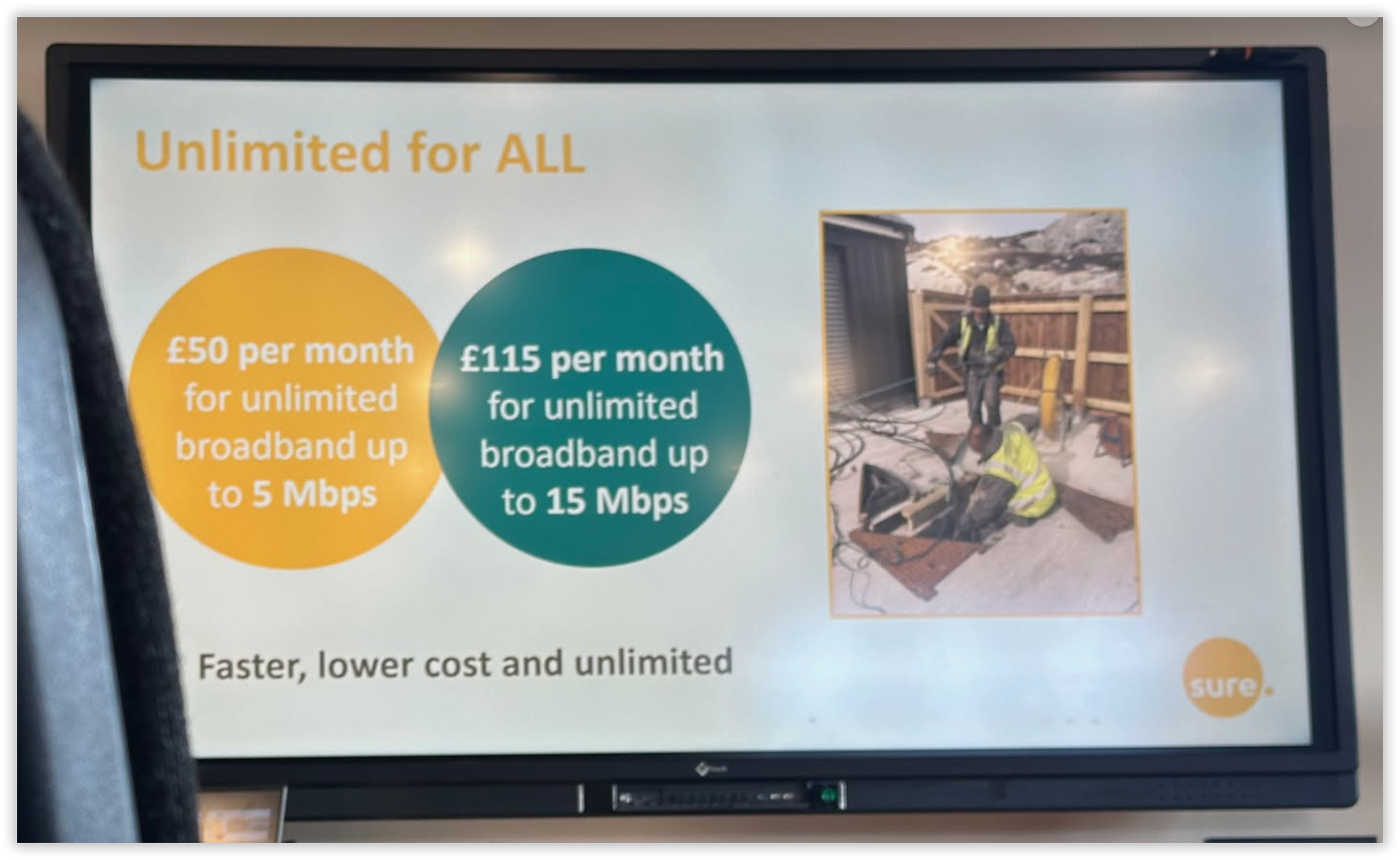 Slide 2
Slide 2
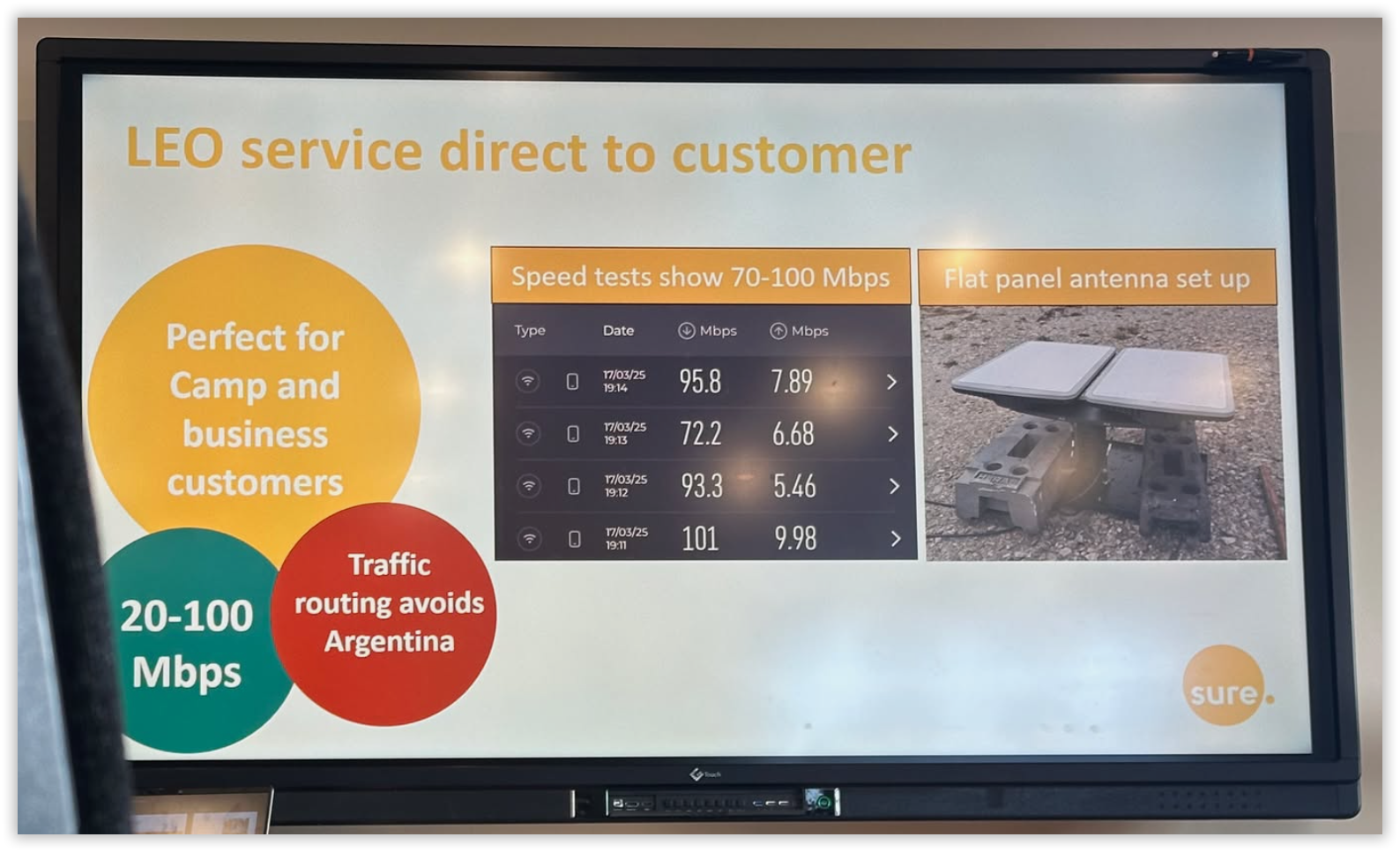 Slide 3
Slide 3
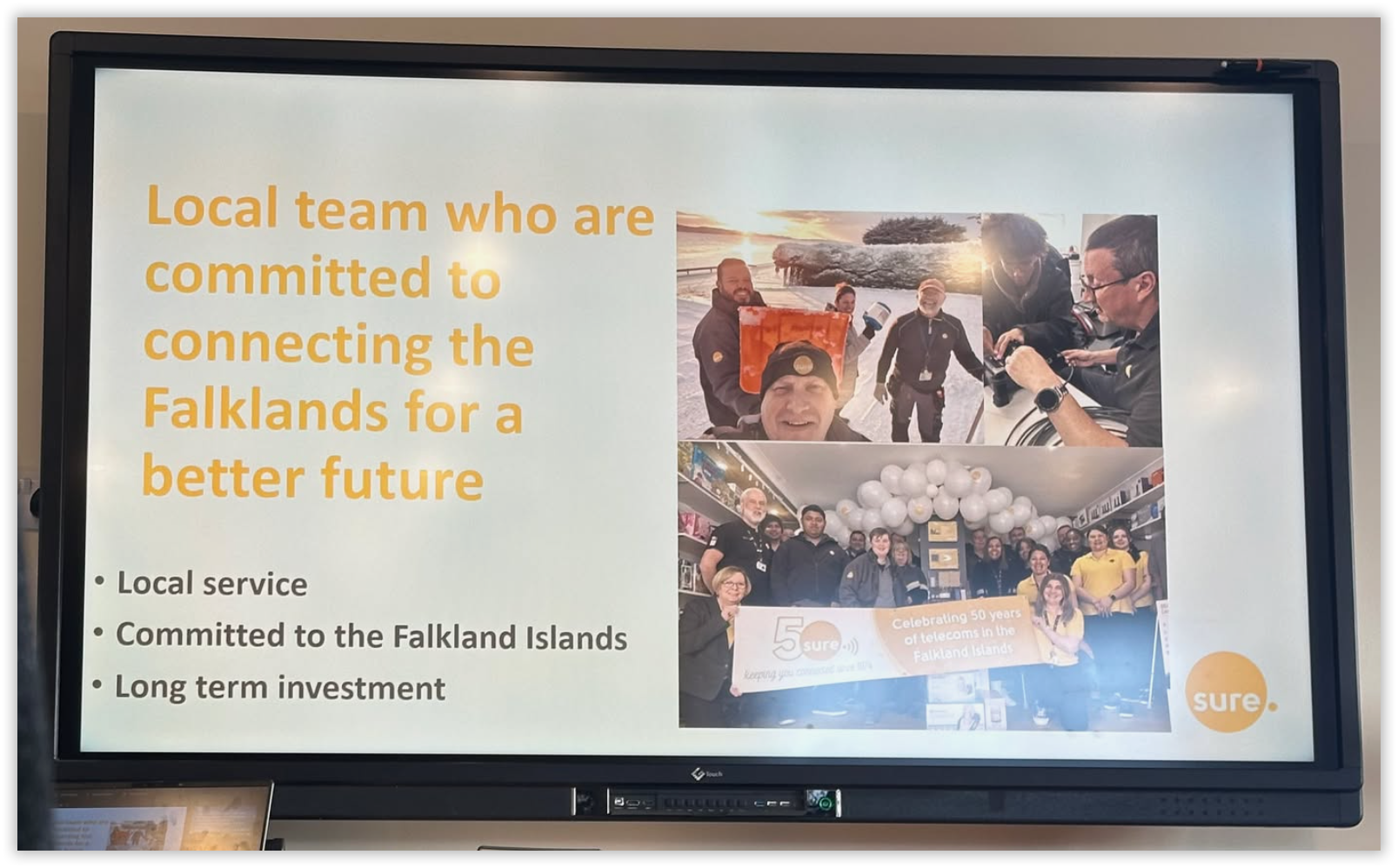
Slide 4
 Slide 5
Slide 5
OpenFalklands comment
There was a general view that the audience was disappointed with what they heard in the two meetings. Yes, Sure announced two new Internet Access service packages that were “unlimited” i.e. the end of the much-hated quota system, but the main message that was communicated multiple times in the presentation was that if Starlink was allowed on the islands, Sure would not make any profits and would operate at a loss.
It was stated several times that there was no room for a second operator due to the small size of the community” This was their experience in Ascension, it was asserted.
The other memorable theme that came across was negativity about the performance of Starlink. I was always taught never to knock competitors in a presentation, but that seems to have been forgotten here!
I will limit further comments to one specific area. It was stated that:
“Stanley has one Starlink beam above it and that beam has a maximum capacity of 750Mbit/s”
“Starlink uses ‘beam technology’ like all LEO services and Starlink’s beam is the size of Stanley”
“1st version of Starlink has only 750Mbit/s of capacity available to a town the size of Stanley”
“This is not very different from what Sure has today.“
These comments are incorrect as capacity is not limited to a single beam (as confirmed with senior engineers in the LEO industry), as even the first 1600 ‘birds’ had 20Gbps throughput each, and its multiple beams can aggregate individual beam traffic to increase delivered capacity. We shouldn’t forget that several Starlink satellites can be seen simultaneously in Stanley at any one time to increase delivered capacity. This is not the case with OneWeb. (I am always happy to be proven wrong).
In regards to the 10Mbit/s claim, please take a look at Starlink’s own statistics that show expected download speeds throughout the world if you take a look here.
We look forward to reading the paper Sure said it will publish soon.
Sure’s OneWeb performance.
Sure Falkland Islands installed a OneWeb HL1120W antenna at the Chamber of Commerce for the presentations. It was stated that these antennas had only been in the islands for 48 hours.
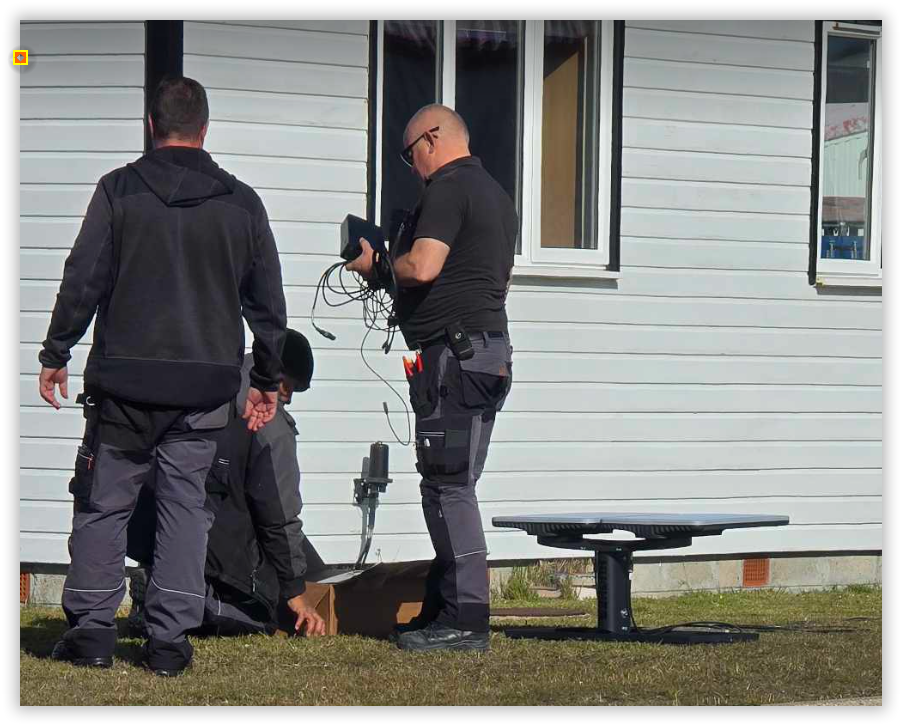
Installing the OneWeb HL1120W antenna at the Chamber of Commerce.
Below is an OoKla speed test taken by one of the attendees of the presentations. It shows a download speed of 100Mbit/s and an upload speed of 7.6Mbit/s. The latency shown was 114mS to an Intelsat server. The 114mS indicates that the likely location of the Ookla server is in San Paulo. Latency to the UK would be much higher as discussed several times.
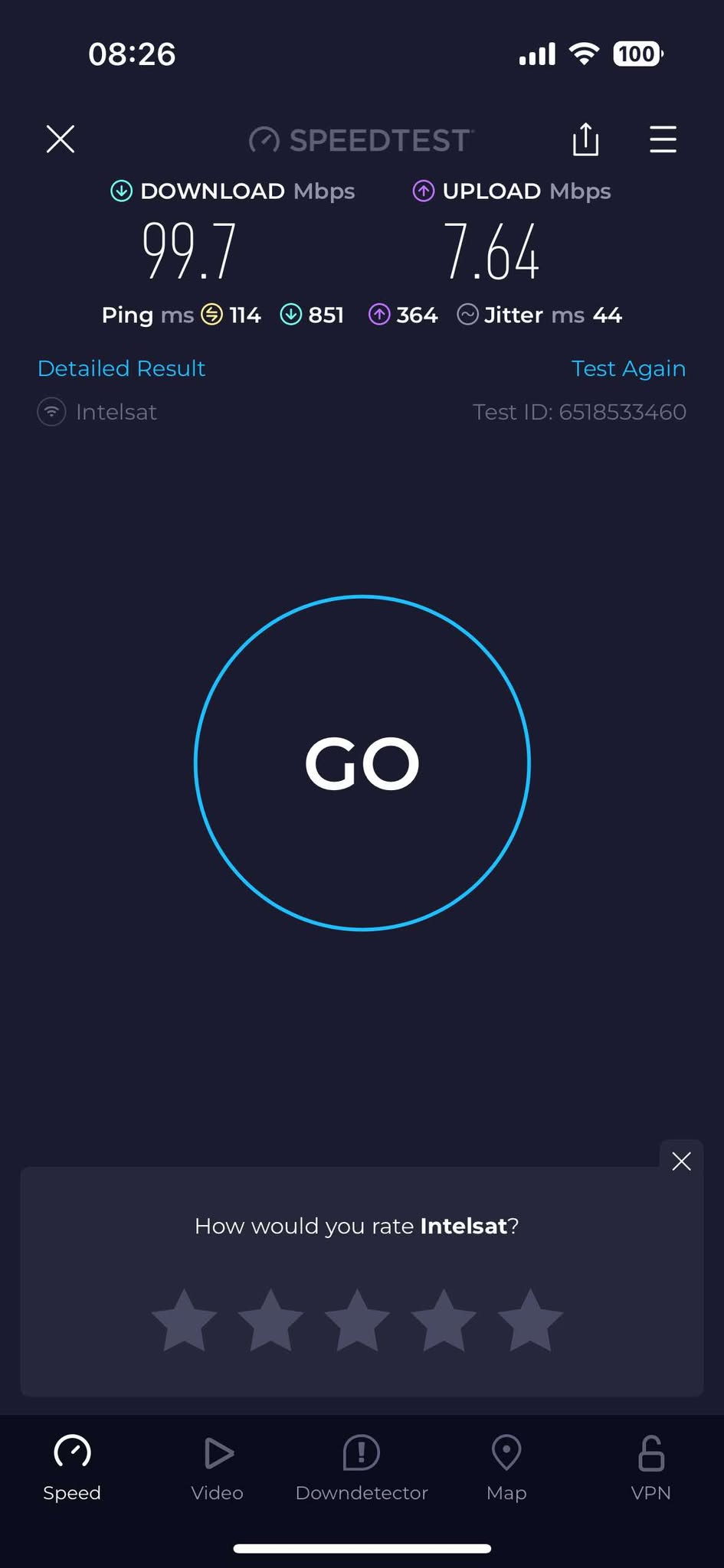
Chris Gare, OpenFalklands March 2025, copyright OpenFalklands

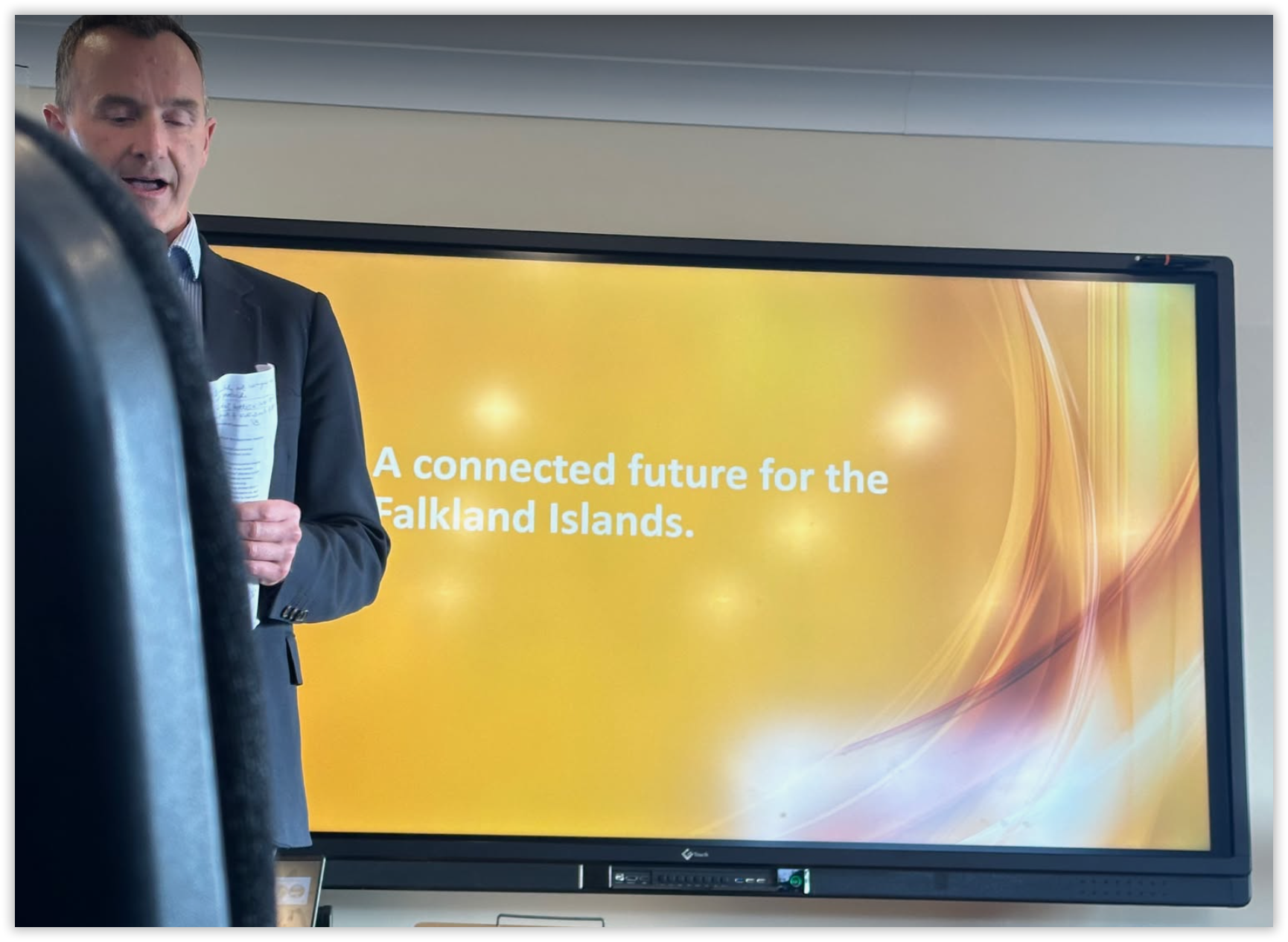
Thanks Dan. By way of explanation of Dan’s comment, let me explain what NCo=1 means for the technically minded: Any satellite that sends radio signals (RF energy) toward Earth must follow specific power limits to ensure the signals received on the ground aren’t too strong. These limits are measured using a standard called Equivalent Power Flux Density (EPFD), mainly set by the ITU.
When multiple satellite beams cover the same area and use the same frequency, their signal strengths combine. To stay within the power limits, each beam’s transmit power has to be reduced. For example, Starlink is required to use a setting called Nco=1, meaning only one beam using a given frequency can cover a specific area (or “cell”) at a time. As a result, they can only project eight spot beams onto a single cell without overlapping beams on the same frequency. This restriction significantly limits how often they can reuse frequencies and reduces the overall capacity of the system.
Currently, each Starlink constellation (Gen1 and Gen2) has an “NCo=1,” as in there is only one co-frequency beam. While each Starlink constellation has multiple beams hitting the ground at a location, only one beam carries data on each frequency for each constellation.
Last year, Starlink applied to the U.S. Federal Communications Commission to allow NCo>1 on the Gen2 constellation. Assuming that the FCC allows it for the U.S., this additional capacity will then be rolled out worldwide. I do not know what the NCo value would be for the Falklands, but it could be substantially more than one.
So you can see that currently, this fellow seems to be off on Starlink’s capacity by a factor of two and in the future likely will be off by well more than that. In addition, as Starlink continues to launch satellites at a frenzied pace, the beam size will become smaller.
“Too little, too late”, personified.
They sound desperate, and they are giving up their hand in the fact that they have been making a huge profit for decades now. They have been giving tiny improvements forever, and limiting the capacity of what could have been given by using intrusive software to the same caliber of what’s been used in autocracies over the world to limit freedom of speech.
This company is a collection of predatory practices and individuals that act with zero accountability, maximize profit based on lies, deception and targeted exploitation of sheer ignorance, but lucky for us, there are more people with technical expertise coming into the Islands, and their lies are all crumbling.
If they are not making any money, if they are the beacon of virtue they portray to be through all the BS media they put out (especially these days), then why are they so desperate to remain as the sole internet provider? If they always did their best effort to provide a quality service with the limited capacity they had, why do they keep giving more and more allowance? Certainly, the whole “unlimited” concept only started to be discussed once Starlink came into play.
Do not be confused by the deceptive ways of these snakes. Do not fall for the “the local team, working for you, that keeps you connected to the world since 1909”. Do not fall for the false image of virtue they try to project with programs like traineeships and charity donations, remember we, as tax payers have been “donating” millions of pounds every year, just to be overlooked and insulted each time we walk on their premises.
If you think they have the islands first, why do they hire from outside the islands each time? why do they keep washing their staff with appointed Muppets from other Sure locations? No so much virtue and care for the Islands anymore, isn’t it?
There is no charitable side to Sure, there is no virtue, no redemption… There is nothing they can offer now, and if our government had any gumption they would absorb the operations and get these scum out of the country, or let Starlink in and watch the rats jump ship.
My feeling from both meetings.
People were :
pleased to see the options.
interested in the ‘carrot’ provided to camp, and select others.
concerned about the price “traps” for Stanley residents. Most comments I got were, I’d need to go down to the 5mbps tariff… Others were I’d need to move up from xsml & sml.
Remember that Medium and Large packages make up the majority of users here. The move to the £230/mo and £320/mo options were poorly received.
Allow me to quote something from the Penguin News…
“In their recent internet survey I replied to the last question which was something like “…what do you hope to see for the future?” by saying that I really looked forward to the day when the cold hard wind of competition froze the complacent smile off the face of Cable & Wireless.”
Bill Luxton, 28th March 2003
I think that competition IS the best regulator.
Not only competition, but disruptive technology, Starlink being the most compelling example of that.
Back when Bill Luxton wrote that in 2003, using callback services for international telephone calls was considered disruptive by Cable & Wireless, as was using Skype and other Voice over IP services, both of which C&W did its best to throttle.